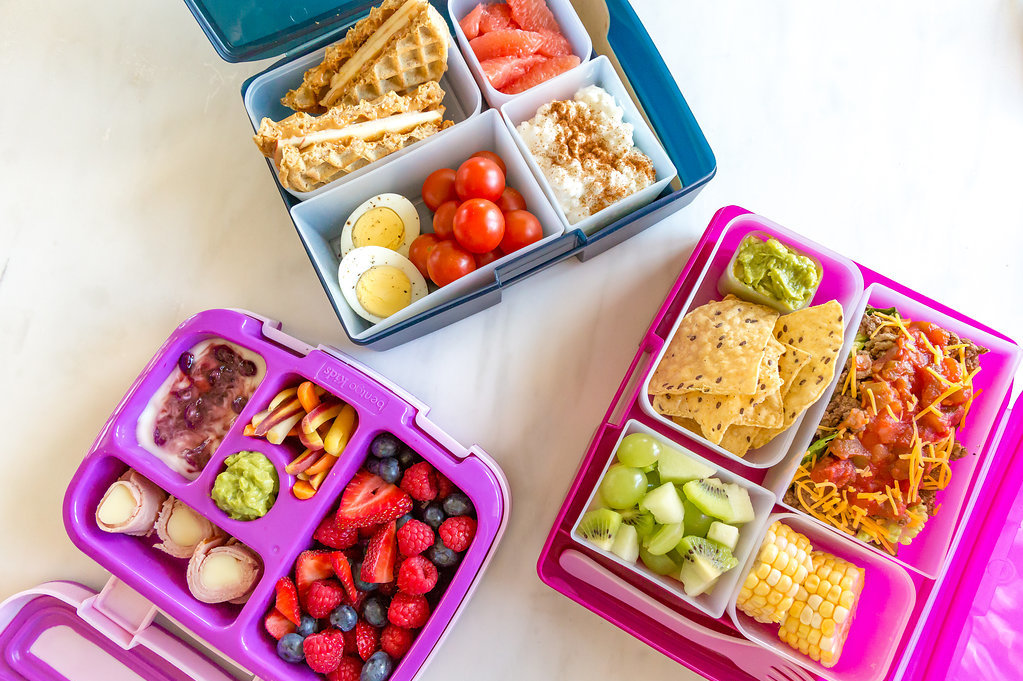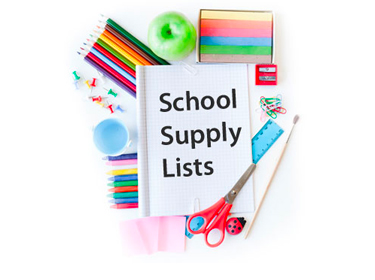
It’s that time of year…back to school shopping has started and the first day jitters are creeping back into your littles tummies as they prepare for their first day of school. Whether your first day back falls before or after Labor Day, most of us are mentally preparing for August/September and what the new schedule will look like when summer comes to an end.
One thing that I recommend is starting a daily routine (if you have fallen out of routine) to get your kids ready for early mornings, getting dressed and being presentable, eating breakfast (the HARDEST thing for my middle one), and getting out the door. Here are some tips I have found helpful when the end of summer is inevitable and the start of school is coming.
1. Get the ball rolling on summer reading or other assignments
First, make sure you set aside some time to address any required assignments or a reading list that may have been provided by your child’s school.
If you can catch it now, and then plan out time to work on those assignments, you can avoid that last-minute scramble to finish up books, math packets, and other summer assignments during the days leading up to the start of school.
A great way to get summer reading done, especially if your child finds it a bit daunting, is to set aside time for DEAR (Drop Everything and Read). This works best when everyone is getting in on the “DEAR” action… so come up with a time as a family (after lunch, after dinner, etc.) where everyone in the house puts down what they’re doing, turns off all electronics, and sits down to read.

2. Start the sleep schedule shift
If you’re looking for a recipe for disaster, spend 3 months getting your kids used to staying up late with a lazy 10am wake-up, and then abruptly force them out of bed at 6am to head off to learn for 6 hours straight.
Well without realizing it, this is exactly what happens to most of our families in the lead up to the start of school. Whoops!
Now of course we’d never intentionally send our kids off to school in a zombie-like sleep deprived state, but it is important to keep in mind that study after study shows that loss of sleep for kids can negatively impact not only their performance in school, but also their physical and mental health.
So that being said, it’s a good idea to address the summer vs. school year sleep schedule difference at least one week before school starts to get your kids (and you) adjusted before the first day.
First, schedule a family meeting to sit down and establish what that schedule is going to look like. What time are you going to wake up? And what time to does bedtime need to be in order to get enough sleep each night?
Then, each day leading up to school, set the alarm clock a little bit earlier so that by the final day of that week, they’ll be getting up at almost the same time they need to get up in order to be ready for school. So if that’s 6am, the schedule might look like this
Day 1 – 9:00 am wake-up
Day 2 – 8:30 am wake-up
Day 3 – 8:00 am wake-up
Day 4 – 7:30 am wake-up
Day 5 – 7:00 am wake-up
Day 6 – 6:30 am wake-up
Day 7 – 6:00 am wake-up
But waking up is actually only half of the equation, because is your child isn’t also starting to wind back bedtime, it’s going to be harder and harder for them to stick to the schedule and they’ll start losing sleep before school even starts! Not good.
So the second part of this trick is to also set a bedtime alarm that follows a similar adjustment schedule. There may be some moaning and groaning, but if you make sure to explain and set the expectations up front, it will help your son or daughter understand why they’re doing it. Plus they’ll (hopefully) be tired enough by waking up earlier that this isn’t too much of a “task.”
Execute this plan, and you can help smooth out one of the biggest “shocks to the system” when starting school again.

3. Start the morning routine
Now the “waking up” piece of the puzzle is taken care of, your family is getting ready to wake up on time for school. But then what do they do after that?
That might seem like a silly question, but having a morning routine established that makes sure your son or daughter are off to school in the morning with everything they need each day is another key component of reducing stress and disorganization during the school week for the whole family.
Because there generally isn’t a structured routine in the morning during the summer, all too often, even if everyone is up on time, mornings during the first week of school turn into a mad dash of collecting backpacks, school supplies, lunches and breakfast before ushering everyone out the door.
So when you have that family meeting to establish the new wake-up schedule, also take some time to discuss what needs to happen each morning. Talk it through so that the expectations are clear, and include some “night-before” preparation as well to make mornings easier.
Then, to take it a step further, actually turn it into a fun visual checklist for them to follow that you can post on the fridge or front door.
During the lead up to school, practice waking up at the set time and then slowly adding in steps of the new routine – whether that’s getting dressed and brushing their teeth, getting their backpack ready, or making sure to be at the table ready for breakfast…
And before you know it, the first day is here and they’re off to school with everything they need.

4. Plan out lunches ahead of time
Okay ready for another one we usually don’t think about until the first week of school?
Packing. Lunches.
This is definitely one of those things where if you get off to a good start with some healthy habits, they can be pretty easy to maintain. But if you get off to a rocky start (e.g. sending them to school with a few bucks, which if we’re honest are probably spent on snacks…) it can be hard to change those habits mid-stream.
So let’s get the routine down now. Again, have a sit down with your kids and brainstorm a few different easy lunch ideas that they’d like to eat, but will also be healthy enough to keep their energy levels up throughout the school day (and avoid the post-lunch crash).
A good formula for this is:
- A fruit and veggie
- Protein
- A drink
- A small dessert
- Whatever else rounds out the meal
The week before (the magic time window) is a great time to go shopping and start making lunches again so that the whole family gets back into the swing of it before the big day.

5. Organize the homework space and gather up school supplies
Now it’s time to take stock of what needs to happen after the school day – primarily, where homework and studying gets done!
Identify a few places your child can do homework this year (the bedroom isn’t a great idea) and give the spots you’ve select a once-over to determine what you might need. Then make a list and plan a trip to the local office supply store to get what you need.
Now, if your son or daughter is on the younger side, many schools provide a list of materials you’ll need for the start of school (and sometimes teachers will make modifications), so it’s probably a good idea to plan your school supply run after you’ve been to the open house…

6. Attend the open house
Most schools have an open house. Make the commitment to go, even if you’ve heard it all before. Here’s why:
When school starts up again, parents tend to most worried about… you guessed it… academics.
What are the requirements?When are the tests?
What does my son or daughter need to know in order to perform well and learn what they need to?
Now’s the time to start engaging with the process and answering those questions for yourself so that you know what the expectations are going into the new year.
For your kids though? It’s the two F’s: friends and fitting in.
This is especially true during a transition year, either to middle school or high school, when they’re going to be encountering what seems like a whole new world of people, teachers, and routines.
Thankfully, the open house will help with all of these things. As parents we can get a sense of the requirements being put on our kids, and our kids can start the process of getting comfortable in their new environment by:
(1) Working their locker. Have them do a trial run 3 times with their locker combination to make sure they’re confident they can get in and out when they need to.
(2) Walking the path from class to class. Again, do this with them 3 times during the open house so that they know where they’re going, and feel comfortable during the day.
Although simple, these small details my a surprisingly large difference in how kids feel about starting school again. So the more you can help them build up their new routine, the smoother the first week will be.

7. Make a checklist
Now having family meetings and going to the open house are all well and good… But it’s easy enough to get caught up in trying to squeeze the most out of the end of summer and forget to tackle your school lead-up preparation until it’s too late.
To make sure that doesn’t happen, after the open house, make a checklist of what you need to have ready for the start of school. Make sure everyone in the family has something to do so that the burden isn’t only on you.
Then, pick a regular time each week (or day if you’re close to the start of school) to go over what’s left as a family. You don’t have to be a taskmaster, but you do have to set some accountabilities for the family so that everyone is better off when the school year hits.

8. Get involved from the start (and put yourself in their shoes)
And finally, if nothing else make sure you’re setting the tone for the school year right at the start by making the commitment to be involved.
Be sure to discuss not only where homework will be done but at about what time it should start. Discuss these logistics with your child and get their input. And then apply that same process to each important aspect of their school lives.
Being involved doesn’t mean micro-managing their schedule and how they accomplish their schoolwork… but it does mean having the discussion with them about it.
Perhaps most importantly, when you’re doing this, put yourself in their shoes:
- What are they thinking about?
- What things are they worried about that you might take for granted?
- And what can you do to help (in a way that gives them the autonomy they need to feel in control)?
Ask these questions on a regular basis, and for the most part, it’ll be hard to go wrong.

So that’s it! Eight ways you can re-start the engines on the school routine now…
…so that when that first day of school hits, you, your kids, and the whole family will be ready for smooth sailing this year.
0 Comments